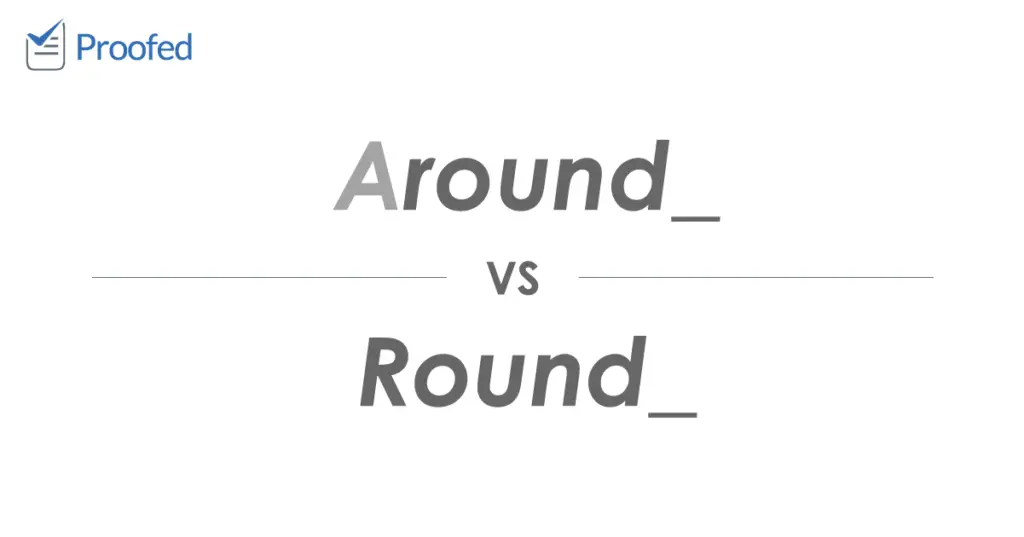Are the words “around” and “round” interchangeable? Yes. Except for when they’re not. The problem is that these terms have several uses between them, but only some uses overlap. To make sure your written work is error free, then, check out our guide to using these words correctly.
Around and Round (Positions and Movements)
We typically use “around” to describe the position or movement of something. This can include any of the following:
- Moving in a circular motion or following a perimeter
- Surrounding or being surrounded by something
- Being near to or in the general proximity of something
In each of these cases, “around” works as either an adverb or a preposition. We can see how each use works in practice in the examples below:
- We started by walking around the edge of the field.
- There were trees all around.
- We checked to see if there were any farms around.
We can also use “round” in any of these sentences. For instance:
- We started by walking round the edge of the field.
- There were trees all round.
- We checked to see if there were any farms round.
When discussing the position or movement of something, then, you can treat “around” and “round” as synonyms. However, “around” is usually the better choice in formal writing.
Approximations and Rounding
Another use of “around” is as an adverb meaning “roughly” or “approximately.” For example, we could say:
I have around $150 to last the next month.
Find this useful?
Subscribe to our newsletter and get writing tips from our editors straight to your inbox.
But even if we can use “around” in relation to numbers, this should not be confused with “rounding” a number up or down. Nor is it the same as describing something as a “round number” in math.
Other Uses of Round
The word “round” has other uses as a noun, verb, and adjective. As a noun, for example, it can mean any of the following:
- A stage in a process or competition (e.g., A round of golf…)
- Something cut into a circle (e.g., Pastry rounds…)
- Drinks bought for a group of people (e.g., I’ll get the next round…)
- A shot from a gun (e.g., They fired three rounds into the air…)
As a verb, meanwhile, in addition to “rounding” a number, it can refer to:
- Moving around something (e.g., Rounding a corner…)
- Forming something into a circle (e.g., He rounded his lips and blew…)
Finally, as an adjective, it can mean “circular” or “plump.” In short, “round” has a lot of meanings! However, we cannot use “around” in its place for any of these noun, verb, or adjective uses.
Summary: Around or Round?
While “round” can be an informal alternative to “around” when used to describe the movement or position of something, this is not the case with other uses of these words. Remember:
- Either around or round can be used to describe the movement or position of something. However, “around” is more formal.
- We also use around to say that something is a rough estimate, but we cannot use “round” as a synonym in this case.
- The word round has many other uses as an adjective, a noun, and a verb. However, you cannot use “around” in its place for these uses.
So it is only with respect to movement or positioning that these terms are interchangeable. And if you’d like help checking you’ve used these terms correctly, just let us know.



